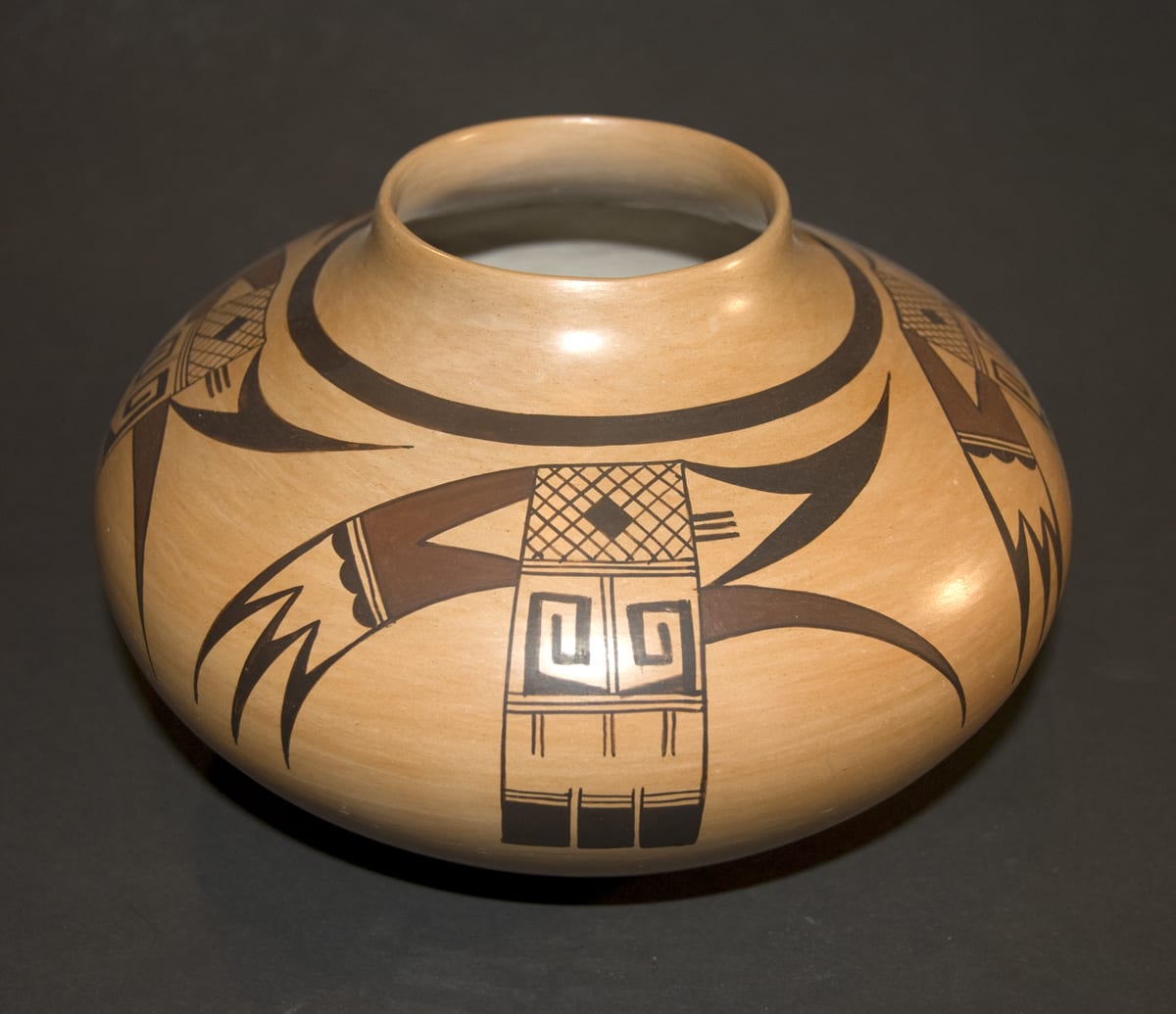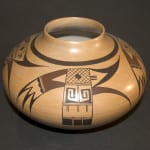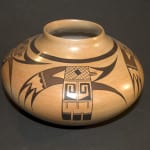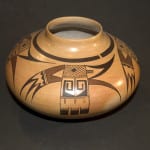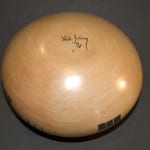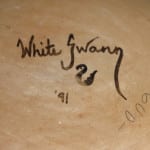Hopi-Tewa seed pot by Dolly Navasie (“White Swan”) with a polychromatic avian design used by Nampeyo, 2001
Dolly is the daughter of Eunice “Fawn” Navasie and thus niece of Joy Navasie (1992-09) and grandchild of Paqua Naha (2001-05). Although much of the Navasie family pottery since the 1950s has been white-slipped, 2008-09 has the Sikyatki Revival gold-blushed body. The design on 2008 is almost a close copy of an “Old Lady” Nampeyo jar that at one time belonged to Richard Howard. A detail of the design of this older pot was featured on the cover of the catalog of the 1974 Muckenthaler Center Nampeyo exhibit, with a sketch of the full design on the front page [on file]. Photographs I took in Dick Howard’s home of the Nampeyo pot are shown here and are on file with the documentation for 2008-09.
Since it uses Nampeyo as a model, the design of 2008-09 shares many of the defining characteristics of a Nampeyo design: 1) A tension between linear and curvilinear elements, typically represented as a contrast between heavy and delicate elements; 2) A deliberate asymmetry of design; 3) The use of color to integrate design elements; and 4) The use of empty (negative) space to frame the painted image.
The original “Old Lady” design is also used by her descendents (see 1992-10 by Jean Sahme, and 2008-02 by Doyle D. Chapella Nampeyo). Ironically, 2008-09 by a Navasie potter is the most fully realized pot of the three and closest in spirit to the original Nampeyo pot.

